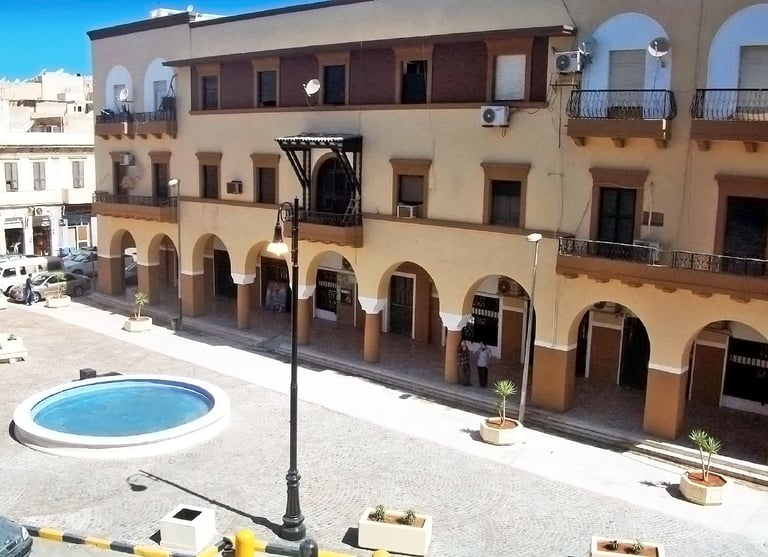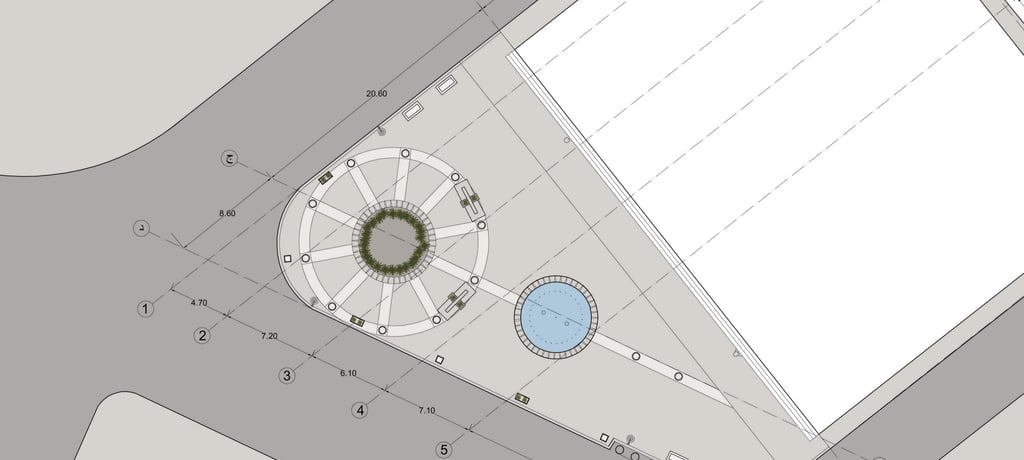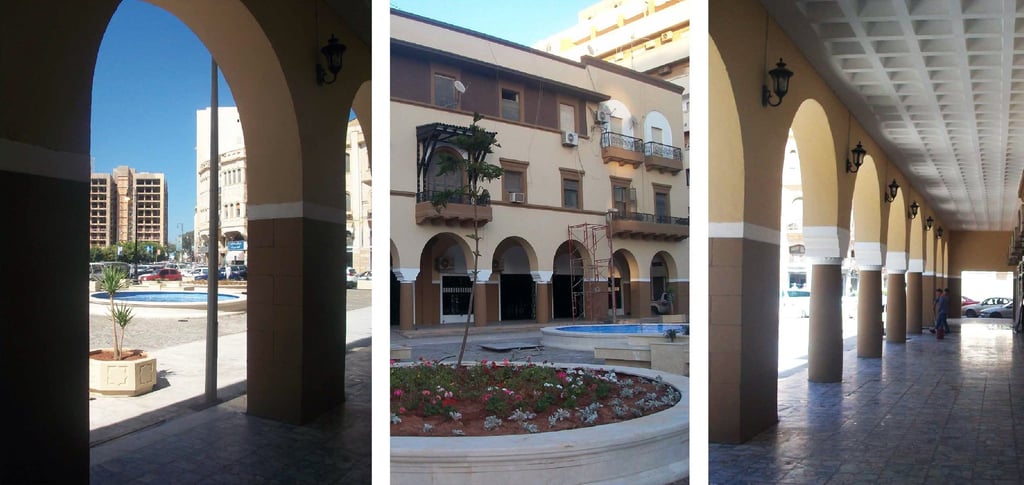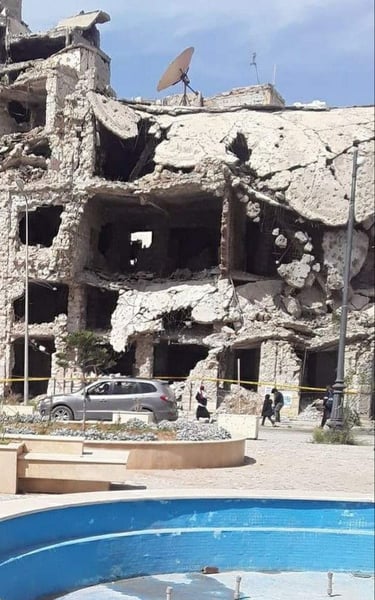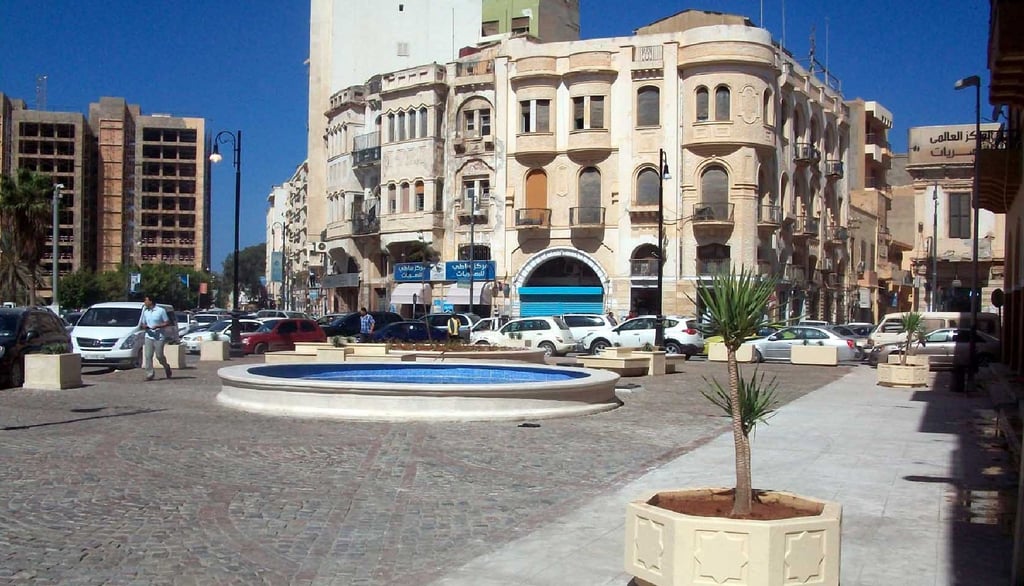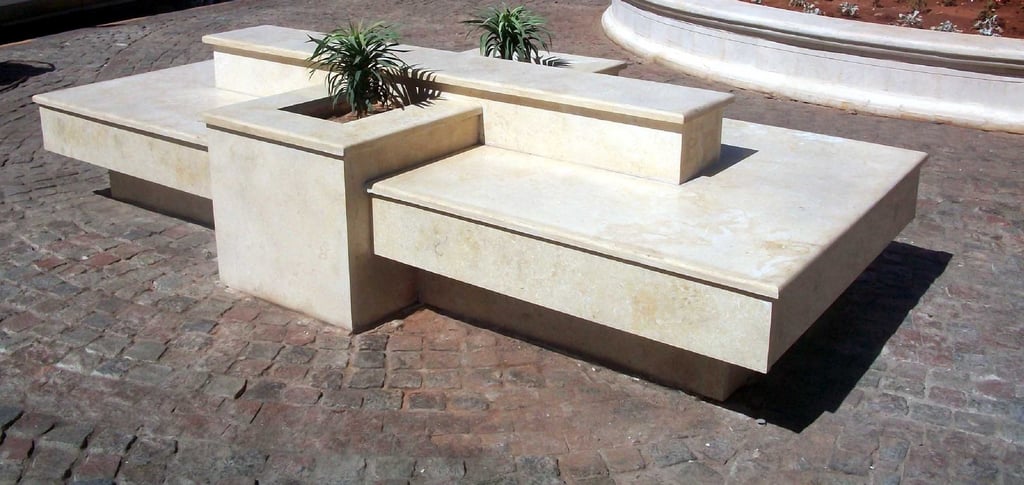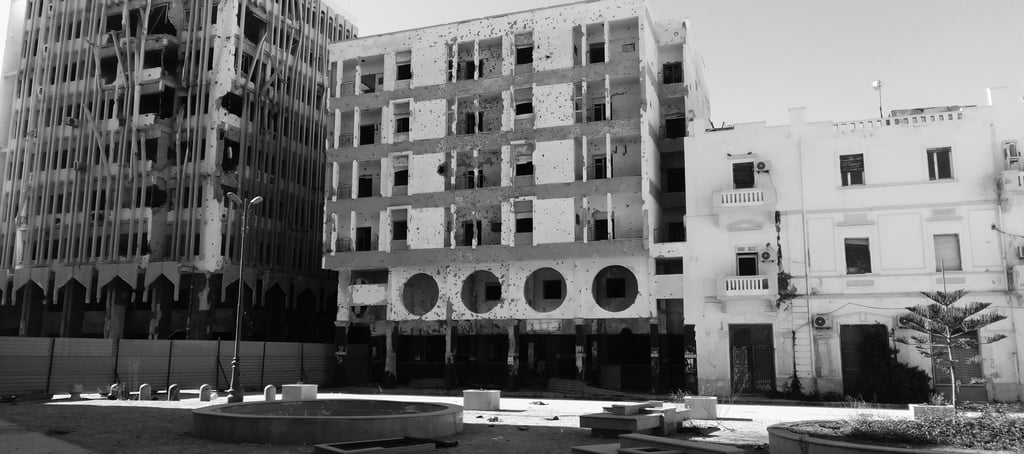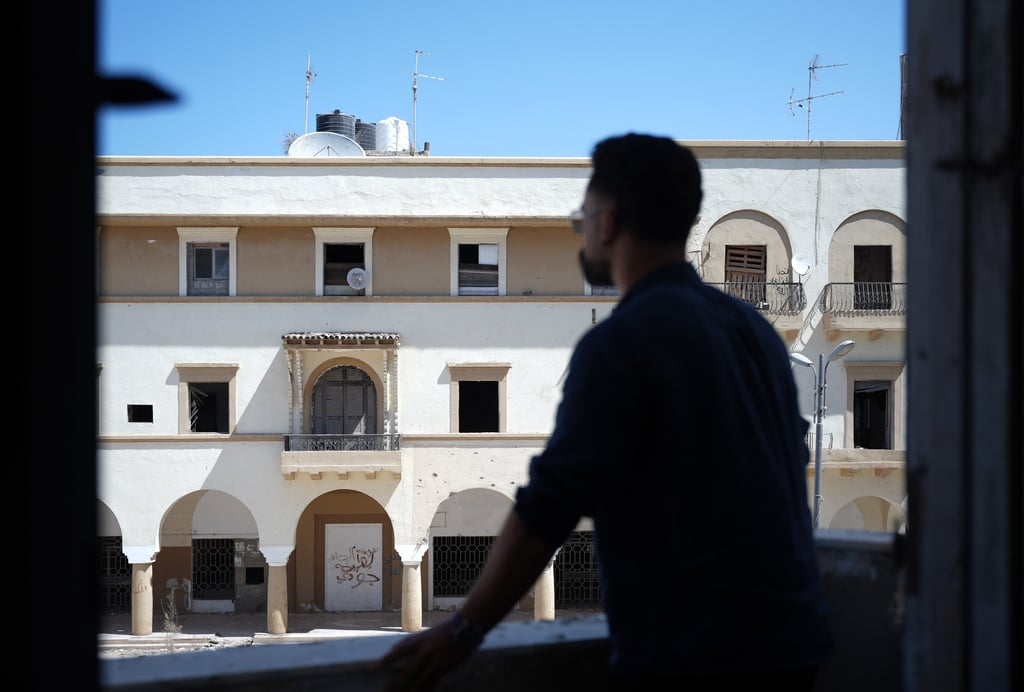Shajara Square
Client: Libyan Ministry of Culture, Municipality of Benghazi.
The renovation of Shajara Square (Maydan al-Shajara) in the Italian heart of Benghazi in 2014 is typical of the work done by the Studio, layering and interweaving narrative and history, as well as the complexities of North African Islamic and post-colonial identity. In collaboration with the architects Iman Al-Zuway and Aziz Kurd, JE Architects designed and supervised the redevelopment of the square alongside the Libyan Society for the Environment and Sustainable Development.
Working with the client, the Libyan Ministry of Culture, we worked first to uncover the history of the square. The former Italian Piazza Cagni was the heart of colonial Benghazi, named after Ammiraglio (Admiral) Alfredo Cagni, an Italian naval officer known for his role in Italy’s colonial campaigns in North Africa during the early 20th century. The project team carefully unearthed hundreds of photographs from the National Archives in Tripoli to reconstruct the authentic paint colours used in the early 20th century when the project was first constructed, in addition to the form of the landscape elements - their size and placement. Replanting a mature Norfolk Pine Tree in the centre was also a key part of the proposal in reconstructing history.
Despite this however, the entire project is a more of a spolia of materials. North African granite for the flooring and limestone for the seating and landscape elements became a critique of the International Style's use of concrete globally and in Libya. It also became a re-appropriation of a colonial site by a local post-colonial architect - a way to engage with European architecture through an Islamic lens.
The 21st century ruin is also an inseparable part of the project. The late British architect and historian Jonathan Hill beautifully illustrates the role of time as a protagonist in his many books. Both before and after the studio's renovation of the square, the plaza has fallen into various forms of decay. The cyclical act of destruction and rebuilding is as much a story of resilience, as it is an act that transcends the architect's authorship altogether.
2013-2014
1
10
11
1. Piazza Cagni in the 1940s during colonial rule.
2. The square in 2014 after JEA's renovation.
3. Shajara Square during the 2015 Battle of Benghazi.
3a. Overlooking the destroyed square in 2025 from the Barah Gallery.
4. Plan of the renovation reintroducing historic elements.
5
7
12
2
3
4
6
8
9
5. An overview of the entire project after renovation, including the main colonial building overlooking the square.
6. The destroyed Bin Halloom Building in 2020.
7-9. Italian colonades were used in colonial architecture as both an homage to Rome as well as to reference Islamic architecture. The product was both pastiche and ahistorical. Overview of the entire project after renovation, including the main colonial building overlooking the square.
10. The curvaceous Bin Halloom Building during better days in 2014 after the square's reopening.
11. Detail of JE Architect's contemporary limestone seating for the square, an homage to Italian design and North African stone work.
12. An image of Shajara Square and its growing Norfolk Pine tree in 2025, as it awaits a new era of reconstruction in Benghazi and Libya.
3a

